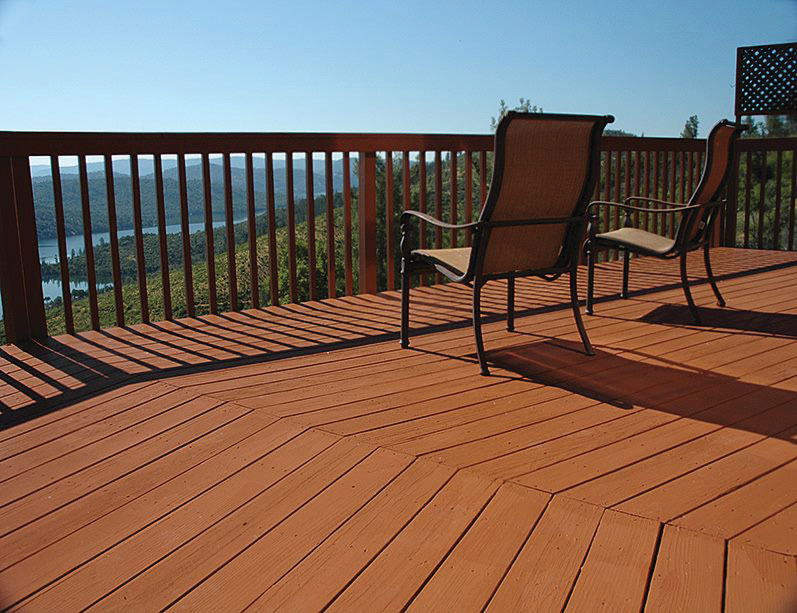Facts About Deck Staining Murfreesboro Revealed
Table of ContentsThe 25-Second Trick For Deck Staining MurfreesboroThe 45-Second Trick For Deck Staining MurfreesboroSome Ideas on Deck Staining Murfreesboro You Should KnowDeck Staining Murfreesboro Things To Know Before You Get This
If you’re worried about the many details of making sure the deck staining is done right, or you just want the peace of mind of hiring a painting professional, it may be worth finding a contractor near you. Ensure any professional is licensed and insured, especially when it comes to decking work.Weather, organic debris and heavy use can damage your deck’s surface, but regular upkeep may prevent you from having to constantly re-stain your deck. We recommend giving your deck at least one thorough clean each year. Early spring is a good time, just as temperatures begin to warm. In colder climates, this should be after snow has cleared.
A sealer for a wooden deck is not the same as a stain, even though they both will protect the wood from the elements. It’s the differences, however, that determine whether it’s a deck sealing vs. staining task. In this article, we’ll look at what a deck sealer and stain are, their different types, some pros, and cons, whether you need to seal or stain a deck, plus what the best product is.
Quick Navigation A deck sealer protects wood from moisture, precipitation, insects, mildew and mold, and rot. Most sealers go on clear and dry clear, showing off the wood grain. However, they don’t have a pigment to protect against wood graying UV rays and sun damage. The sun can dry the natural oils found in wood, causing it to gray, dry out, split, crack, or check.
Getting The Deck Staining Murfreesboro To Work

Deck stain is similar to deck sealer, except it offers more protection from the sun, minimizing the graying of the wood. Stains are water or oil-based and range from semi-transparent to opaque, with darker, more solid colors offering better UV protection. A stain can enhance the color of the wood and provide a more consistent pallet.
For the best results with deck stains, the wood should be completely cleaned and dry. Deck stains on horizontal surfaces will need to be reapplied more frequently than those on vertical surfaces. Wood Toner is almost clear with a hint of wood tone or color – cedar, teak, mahogany, and oak – to slightly color the deck boards in a more uniform or desirable tone. Deck Staining Murfreesboro.
Semi-Transparent allows the Resources wood grain to show through while noticeably adding the desired color. It will last 2 to 3 years between applications. Semi-Opaque or semi-solid hides most of the wood grain beneath the rich pigment. It should be repainted every 3 to 4 years. Solid Stains (Opaque) has the richest color and hides the grain the most.
What Does Deck Staining Murfreesboro Do?

Additionally, some products have additives to protect against UV rays and sun damage (Deck Staining Murfreesboro). Sealing a deck is best for cedar, teak, mahogany, or other quality woods as it enhances the wood grain and natural color. Staining a deck protects the wood from mold, mildew, moisture, and rot, and UV rays and sun damage.
The thicker the color, the more view it UV protection it provides. Staining also makes the wood grain less visible, which is ideal for protecting spruce, pine, fir, plywood, OSB decks, fences, and other surfaces. Untreated and pressure-treated wood that is exposed to the elements will dry out, crack, split, twist, and discolor.
Once the wood dries out, it is easy for insects, mold, and mildew to damage the wood. The dry wood is also susceptible to moisture damage and rot. The longer you wait to seal or stain your deck, the more damage to your investment. Sprinkling a small amount of water on the wood is a good way to check if it is ready to be sealed or stained.
Not known Facts About Deck Staining Murfreesboro
Wood that absorbs water will absorb stain or sealer for a better bond. Sealing helps to maintain the color and smooth surface of the wood. The longer you wait, the more faded the wood will become, and the more ‘furry’ the board surface. New decks constructed of pressure-treated or SPF timber should be stained or sealed as soon as the water stops beading.
However, wood that is sealed will still fade over time but will continue to show the natural wood grain. Adding a sealer over a stain isn’t advisable. The stain will protect the wood the same as the sealer. However, since the stain has already sealed the wood grain, the sealer won’t penetrate, or penetrate well, and will peel and flake.
The stain will cover between 150 to 400 ft² and last up to 3-years on horizontal surfaces and 4-years on siding and fences. Deck sealing will protect the wood from splitting, cracking, moisture, mildew, and rot while maintaining the color and grain of the wood. A stain will protect the wood and provides a more uniform tint or color to the wood to complement surrounding structures.
Hopefully, you have a better understanding of deck sealing vs. staining, what they do, and what will protect your deck better. If you found this article of value, please share it with others. Your comments and suggestions are always appreciated. Eugene has been a DIY enthusiast for most of his life and loves being creative while inspiring creativity in others.